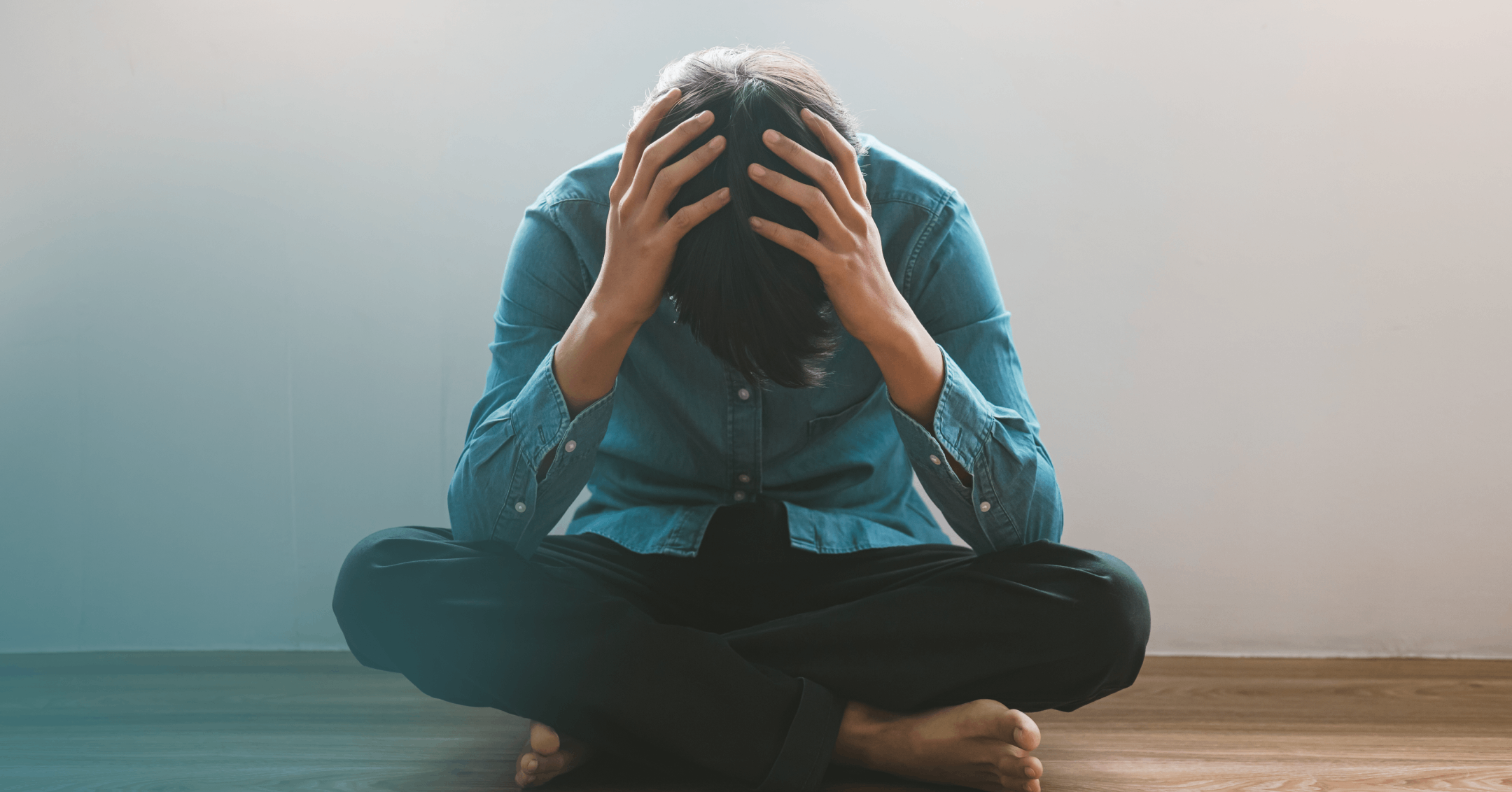Anxiety doesn’t always show up as worry or panic. For some people, it comes out through frequent or uncontrollable crying.
Crying can be a healthy form of emotional release, but if you feel like you can’t stop even when you want to, or that it’s happening constantly, it may be time to seek support.
Therapy can help you explore the root causes of your crying spells and develop strategies to regulate your emotions in a way that feels manageable.
Anxiety is usually associated with excessive worrying and physical symptoms like sweating and tremors. But for some people, anxiety manifests as frequent or intense crying.
If you live with anxiety, you might notice yourself crying more often, more intensely, or for reasons you can’t always explain. And while crying can sometimes be a helpful release, it can also feel confusing or frustrating when you can’t stop. Understanding the link between anxiety and crying can help you feel more in control of your emotional responses — and get the right support if you need it.
Types of anxious crying spells
As common as crying is, research on adult crying — including how it relates to anxiety — is limited. Some research suggests that while crying can have some psychological benefits (like releasing emotions and improving long-term mood), people with anxiety and depression may not benefit from crying as much as other people. You might notice that you don’t feel better after crying, or even that you feel worse.
That doesn’t mean that crying can’t be helpful or that you should never do it. Crying can be helpful to release emotions and to show others that you need their support. But crying uncontrollably without being able to stop can sometimes feel uncomfortable.
When you live with anxiety, it could often feel like you’re crying for no reason at all. While this feeling is valid, there’s usually a reason behind it — even if you can’t immediately name it.
Emotional overload
Anxiety can make you feel overwhelmed with different emotions: fear, nervousness, grief, helplessness, dread, and more. When your emotional system is already to its limit, a small stressor — like a change in plans or an offhand comment — can push you over the edge into tears.
Need for support
One of the main evolutionary purposes of crying is to get empathy and support from others. It’s a way to let people know that you need them. That doesn’t mean that all crying is “attention seeking.” Crying is a valid and normal behavior, and it’s OK to need support when you’re suffering.
Fear of rejection
People with an anxious attachment style have been found to experience more exaggerated crying than people with other attachment styles. While an anxious attachment style is different from having an anxiety disorder, they sometimes go hand in hand. If you have an anxious attachment, you might constantly perceive rejection and abandonment, which could make you cry more. Social anxiety could also make you afraid of rejection, which could lead to crying.
Sleep-deprivation
Anxiety can have serious negative impacts on your sleep. Up to 80% of people with anxiety have trouble sleeping. While sleep deprivation may not directly lead to crying for everyone, it can heighten symptoms of anxiety and make it harder for you to regulate your emotions. So you might find that you’re more prone to crying spells when you haven’t slept well.
Hopelessness about the future
Hopelessness is usually associated with depression, but people with anxiety often feel hopeless too. You might feel like there’s no light at the end of the tunnel and that things are never going to get better. This can make you feel powerless and bring on the tears.
Embarrassment
You might feel a constant sense of embarrassment and shame in front of others — especially if you live with social anxiety disorder. This can get you caught in a cycle in which you’re embarrassed by your crying, which causes you to cry even more.
The care you need, when you need it
Learn how Rula can support your mental health journey
Proven strategies for when you can’t stop crying
To be clear, there’s absolutely nothing wrong with crying when you feel anxious or sad. Researchers have found that crying is often a self-soothing behavior — a way to regulate your emotions in a healthy way.
But it’s also important to have some level of control over your crying. For example, it might be inconvenient if you can’t stop crying during an important work meeting. It may also be uncomfortable to feel like you can’t stop crying even when you want to. The key is to be able to take advantage of the benefits of crying, like emotional release, without letting crying take control of you.
If you find that you can’t stop crying even when it’s no longer serving you, these tips may help you.
Distract yourself. One of the most common ways to stop crying is to distract yourself by thinking about or doing something else. This method might be most appropriate when there’s something you need to get ready for, like an event or work meeting. You could try looking around and naming five things you see, reading an article, playing a game, or calling a friend to talk about something unrelated.
Use your breathing. Focusing on your breathing can help calm your nervous system and signal to your body that you’re safe. Try a breathing technique like taking slow, deep breaths — inhale for four counts, hold for four, and exhale for six. Repeat this several times until you feel your body start to settle.
Stop fighting it. Sometimes the best way to stop crying is to give yourself a few minutes to cry instead of trying to stop. Fighting the tears can make you feel more tense, which can actually prolong the crying. If you’re in a safe space, let yourself release those emotions — and see how you feel afterward.
Ask for support. If you’re crying because you feel overwhelmed or unsupported, try reaching out to someone you trust. Let them know what you need — whether it’s just someone to listen, a hug, or practical help.
Talk to a therapist. If you’re concerned that you’re crying “too much” or you feel more anxious after you cry, talking to a mental healthcare professional can help. A therapist can help you explore what might be going on beneath the surface and give you tools to regulate your emotions without pushing them away.
If a client told me they often cry when they feel overwhelmed, even if they can’t pinpoint a specific reason, I’d explore whether anxiety might be the cause. Feeling like your emotions build up until they spill over is tough, but you don’t have to manage it alone. There are ways to find relief and support.

Brandy Chalmers, LPC
Clinical reviewer
Find care with Rula
There’s absolutely nothing wrong with crying, whether or not it’s related to anxiety. But if your crying is interfering with your daily life or relationships, there’s no shame in seeking support. A licensed therapist can help you better understand the connection between your anxiety and emotional responses — and help you find healthy ways to regulate your feelings (which could include crying).
At Rula, we’re committed to delivering a comprehensive behavioral health experience that helps people feel seen and understood so they can get back to feeling their best.
Rula makes it easier to find a licensed therapist or psychiatric provider who accepts your insurance so you don’t have to choose between affordable care and excellent care. With a diverse network of more than 15,000 providers, 24/7 crisis support, and appointments available as soon as tomorrow, we’re here to help you make progress — wherever you are on your mental health journey.
Rula's editorial process
Rula's editorial team is on a mission to make science-backed mental health insights accessible and practical for every person seeking to better understand or improve mental wellness.
Members of Rula’s clinical leadership team and other expert providers contribute to all published content, offering guidance on themes and insights based on their firsthand experience in the field. Every piece of content is thoroughly reviewed by a clinician before publishing.




